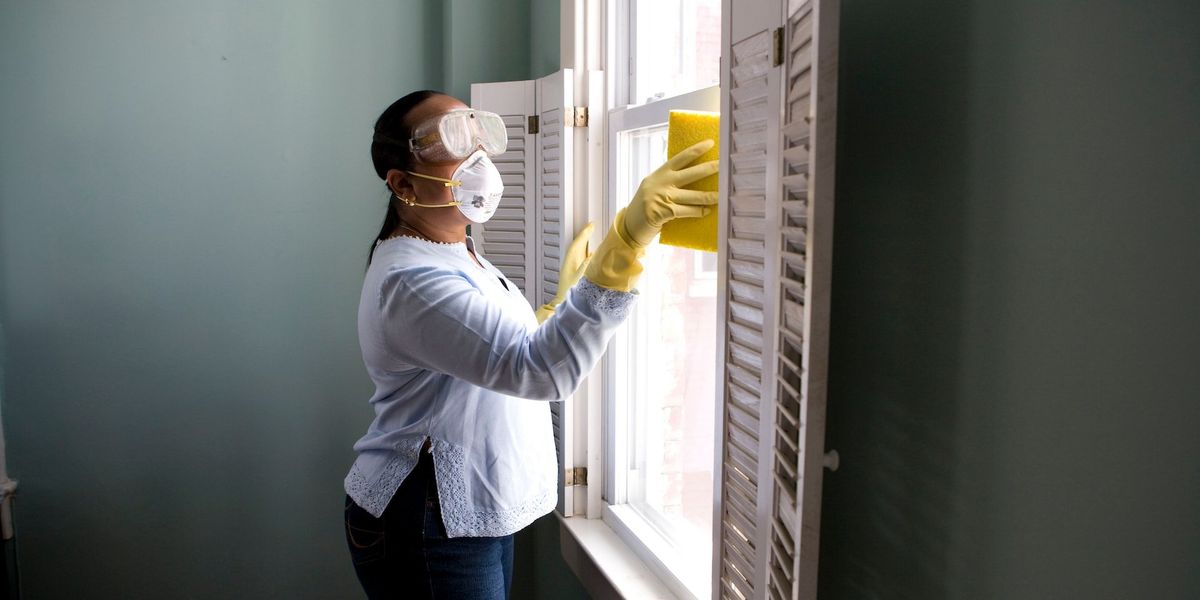
Products used at home and in the workplace frequently contain toxic chemicals that are linked to reproductive and developmental harms, and cancers, according to a new study published in Environmental Science & Technology.
Scientists looked at 172 categories of consumer products, from cosmetics to cleaning agents, and found that 105 included chemicals regulated by California due to health impacts.
The U.S. tends to regulate chemicals in isolation, Dr. Megan Schwarzman, a physician and associate director of the Berkeley Center for Green Chemistry at the University of California, Berkeley, who’s an author on the study, told Environmental Health News (EHN). “This study really highlights the extent of the potential aggregate exposures, multiple sources of the same chemical and co-exposures, exposure to multiple chemicals from the same source,” she said.
In the home, general cleaners, laundry detergent, dishwashing soap and nail coatings had the largest number of toxic chemicals present. Adhesives, autocare products, cleaners and lubricants rose to the top of concerning workplace exposures. Many known toxic chemicals could be found in use across these categories, meaning people could experience exposures from multiple sources. Researchers hope these findings will help prioritize a move away from harmful chemicals people are repeatedly exposed to, and reformulation of products with safer alternatives.
Toxic emissions

Product labels aren’t required to include all chemicals present and their quantities, explained Schwarzman, so researchers turned to a database of chemical emissions from consumer products maintained by the California Air Resources Board. The board collects ingredient information from manufacturers of products sold in the state, and estimates the total emissions from the products to monitor contributions to smog. The database includes only volatile organic compounds, one type of toxic chemicals regulated by California, so other kinds of chemicals weren’t considered in the study.
“We were able to point to several chemicals that are in widespread use, and in many cases are used for functions that are not essential,” Claudia Polsky, director of the Environmental Law Clinic at the University of California, Berkeley and author on the study, told EHN.
Diethanolamine (DEA) stood out to Dr. Schwarzman for its widespread use, despite being listed by California as a carcinogen and banned for use in cosmetics in the European Union. It can be found in both personal care items and products like lawn treatments and degreasers. She explained that even though each product might have a small amount of DEA, someone’s cumulative exposure from multiple products could be high.
Formaldehyde is another listed carcinogen the study found in use throughout many categories of personal care items and cleaners, Kristin Knox, staff scientist at the Silent Spring Institute and study author, told EHN.
Public scrutiny and regulatory pressure
Eighteen chemicals stood out to the researchers as high priorities for elimination and reformulation. “Prioritization is hard, the authors have provided valuable information for regulatory agencies to act on,” Carol Kwiatkowski, science and policy senior associate at the Green Science Policy Institute, who is unaffiliated with the study, told EHN in an email. Seeing the enormity of hazardous chemicals used in product categories like personal care calls their use into question, she said.
“There are so many safer alternatives readily available.”Industry is resistant to change, but the study emphasizes a public health need to regulate and reformulate non-essential uses of harmful chemicals, explained Polsky. “[Reformulation] just requires enough public scrutiny and regulatory pressure to do the science and to be willing to pay the additional cost,” she said.
Exposures to toxic chemicals don’t fall evenly on the population, the study points out. People who work as janitors, nail technicians, auto mechanics, hairdressers and more face high workplace exposures to chemicals they have very little control over. Products that can contain many toxics, including skin lighteners and hair relaxers, are marketed to people of color.
“This really shows the poverty of the ‘protect yourself through wise purchasing’ narrative,” said Polsky. Instead, she encourages political mobilization to address widespread exposures.
“Our study shows that these things are in vast numbers of products across vast categories that people use everyday.”
Tatum McConnell is a reporting fellow at EHN.org. Follow her on Twitter at @tatum_mcconnell.

